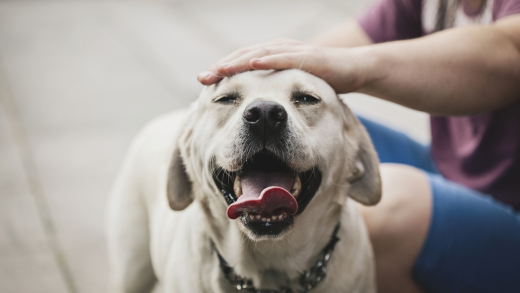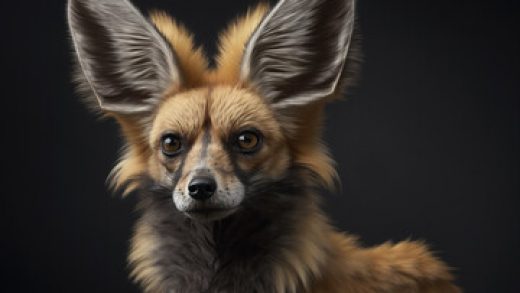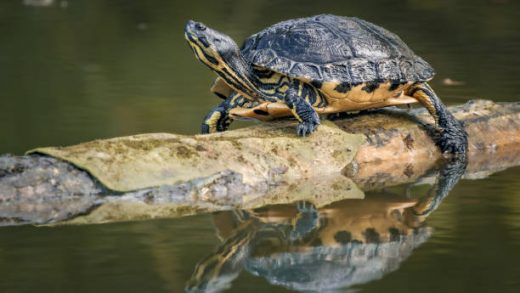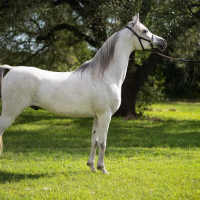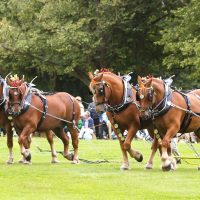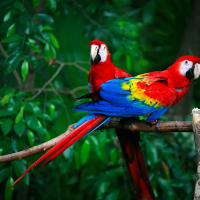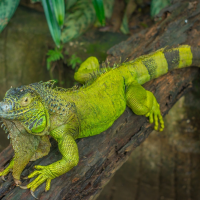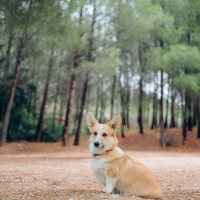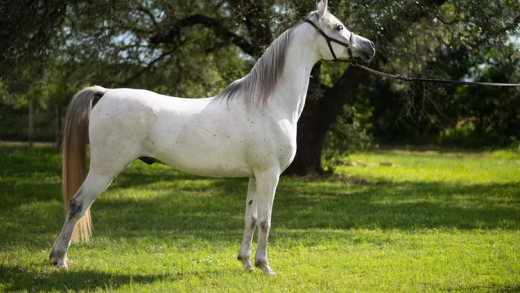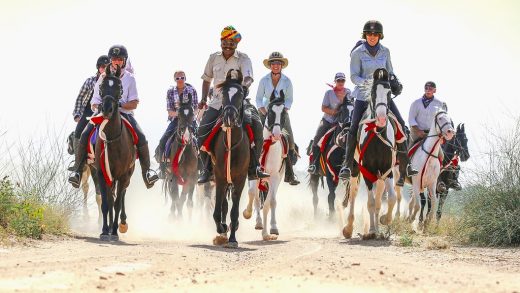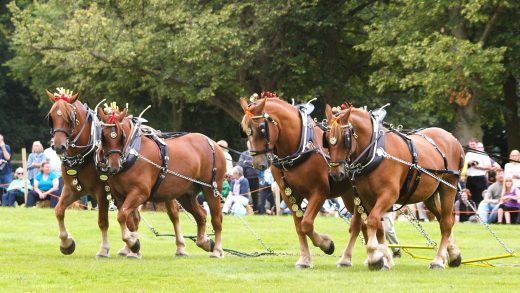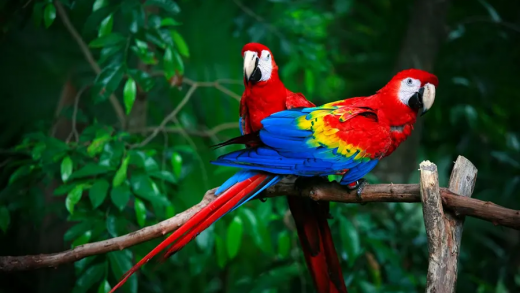Table of Contents
Introduction
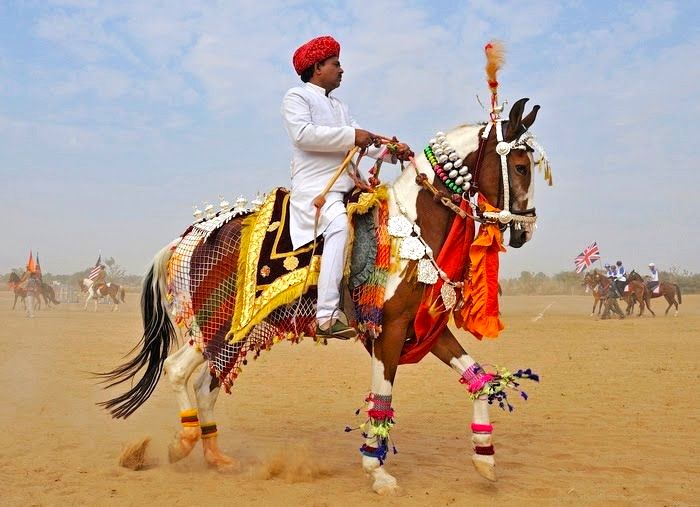
The Marwari horses, known for its characteristic inward-turning ear tips and royal disposition represents India’s rich equestrian history. This breed which evolved in Rajasthan’s Marwar district has a rich history that is connected with Indian combat, culture and traditions. Marwari horses recognized for their bravery, endurance and distinct posture have earned their place as an appreciated aspect of India’s cultural heritage. This page goes into the amazing history, qualities and established legacy of these magnificent horses.
History Significance of Marwari Horse
Originating in Rajasthan’s Marwari region in the 12th century, the royal Rathore clan mated native ponies with Arabian ancestry to create the sturdy and swift Marwari horse. Indian culture and history have high regard for Marwari horses who were regarded as valuable to the Rajput cavalry due to their bravery and loyalty. But as a result of British policy preferring imported horses over native ones, the breed saw a drastic decrease in the number of Marwari horses during the British colonial era.
During the British colonial period, the Marwari horse suffered an enormous decrease as laws favored foreign breeds over local ones causing a decrease in their population. Following independence measures in the 1950s and 1960s attempted to revive the breed with breeders aiming to maintain bloodline purity. The creation of the Indigenous Horse Society of India (IHSI) in 1995 represented a historic moment resulting in coordinated conservation efforts and a steady rise in Marwari horse populations.
As the twenty-first century began, the breed received worldwide recognition for its unique features which increased its global popularity. Today, thanks to advanced breeding techniques and ongoing conservation work, the Marwari horse is making a recovery promising a bright future for the symbol of India’s rich equestrian history.
Characteristics of Marwari Horse
- Height: The average height of a Marwari horse is 14 to 16 hands (56-64 inches or 142-163 cm) that are perfect for a variety of equestrian disciplines and mid-level profile which offers both strength and stamina. Their large yet not gigantic size allows them to move well on challenging terrain while maintaining a tough and suitable construction.
- Lyre-shaped ears: One of the unique features of Marwari horses is that their ears are practically touching at their points. This unique feature is immediately recognized because of its extraordinary appearance that makes this just amazing.
- Refined Head and Arched Neck: Marwari horses have a polished expressive head with a straight or slightly convex face and big dark attentive eyes. They also have an arched neck. Their gently arched neck supports their royal aspect perfectly flowing into well-sculpted shoulders and adding to their proud and graceful attitude.
- Strong Legs and Hooves: They have strong slender legs with clear tendons and tough terrain-adaptable hooves. This durability is especially fit for Rajasthan’s difficult terrain.
- Flowing Mane and Varied Coat Colors: Marwari horses have flowing manes and different kinds of coat colors such as bay, chestnut, gray and black with striking white patterns on them often. Their flowing thick mane and tail add to their graceful royal attitude.

Importance of Marwari Horse
- Cultural Significance
For the Marwaris of Rajasthan, they are much more than just animals. These groups play an important role in defining the state cultures. They may usually be found at religious gatherings, local and traditional fairs, and well-known fairs like Pushkar and Nagaur. Regarding these horses, each one displays the artistry of the regional craftsmen through the saddles, bridles and other accessories.
Throughout Indian literature and tradition, the Marwari horse has played different roles. It is clear that people adore this horse and they use it to represent the idea of a loyal support for courageous people and rulers. It is evident from almost every national song, poet or artwork that celebrates Indian culture how highly valued they are.
- Conservation Efforts
Although Marwari horses have historical and cultural significance, their numbers decreased during British colonial administration which influenced native breeding procedures. Though fans, breeders and other groups have stepped forward to help and rescue this breed. IHSI (Indigenous Horse Society of India) and others participated in the Marwari horse breeding sector that played a role in the breed’s preservation and improvement.
Breeding strategies used on modern farms are focused with both breed purity and health. These efforts have resulted in increased circulation of Marwari horses in India and other nations.
- Modern Utility
Modern Marwari horses participate in a variety of horse riding disciplines, including endurance riding, the therapy for the disabled and Marwari contests. Because of their slow reproductive rate and enormous body size, they participate in activities such as long distance riding and other horse-related acts.
- Global attention
The horse breed especially in India’s Marwari region has received global attention for its unique characteristics and historical significance. This attention has increased their approval and helped in attempts to ensure their maintenance and value.
- Unique Character
Lyre-shaped ears, typical of Marwari horses, are that at the tips of the ears, they are touching each other. This is immediately identifiable due to its highly distinctive and eye-catching appearance; which simply makes this all just so wonderful.
Modern Day Role

Marwari horses are included in various kinds of events and programs nowadays. They appear in endurance competitions, traditional fairs and therapy riding programs. Modern breeding strategies prioritize increasing genetic diversity, improving shapes and assuring changes to diverse equestrian disciplines. Breeders, groups and government programs all contribute to the ongoing success of efforts to encourage and conserve the Marwari horse.
In addition to being used for a variety of equestrian activities, Marwari horses are valued due to their overall appearance which emphasizes strength and style in both their general appearance and specific markings. Breeders and horse admirers throughout the world appreciate the utility and aesthetic appeal of these jodhpurs which make them valuable assets.
Care and Maintenance for Marwari Horse
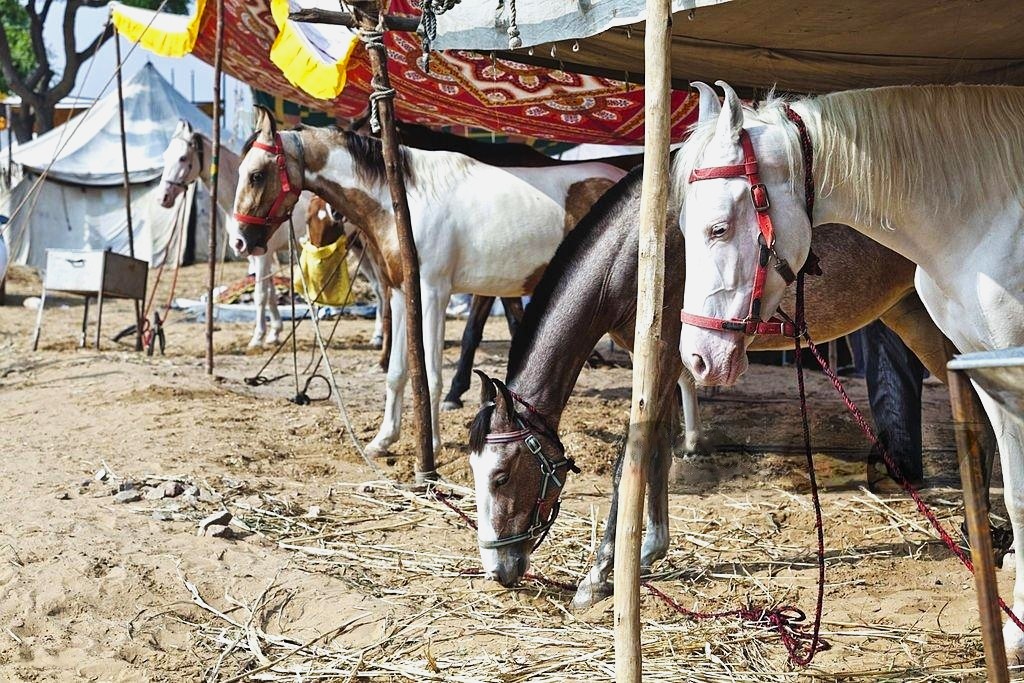
- Diet and Nutrition: Hay, grains and fresh grass should make up a balanced diet for Marwari horses. To maintain overall wellness, their diet should be high in fiber, proteins, vitamins and clean water.
- Housing and Shelter: Clean and cool barns with enough room for mobility are best for keeping Marwari horses. There should be no risks in the stables and the bedding needs to be clean, dry and comfortable on a regular basis.
- Grooming: Groom the coat, mane and the tail often and also clean the hooves. Bathing regularly, especially during summer is very important in enhancing the aspect of cleanliness.
- Health Care: A vet checkup, vaccinations and deworming treatment are required from time to time. Ensure proper dental health care, regular hoof trimmed and footwear by a farrier.
- Exercise and Training: Marwari horses should frequently be exercised and trained in order to have proper health of the body alongside the mind.
- Social interaction: Allow the horses to interact with other horses and handlers from time to time in order to solve problems of stress and other behavioral problems.
- Weather Protection: Include good shelter and drink in hot climates as well as a blanket for cold weather to protect from extreme weather conditions.
- Mental Stimulation: Provide the horse with toys, different terrains and training sessions so that the horse does not get bored.
Conclusion
Therefore, the Marwari horse is much more than a breed and it has acted as messengers of india ’s equestrian past and heritage. Right from the noble origination with the Rathore clan to its usage in today’s equestrian events and world famous, the Marwari horse symbolizes sheer endurance, beauty and utility. The breed faced challenges in the British colonial period, determined conservation efforts helped to ensure the breed’s survival. Thus, based on the ongoing conservation activities, the future of the Marwari horse seems promising. So, preserving this unique breed as a precious India’s heritage. The Marwari horse manifests India’s long equestrian history that symbolizes the toughness of the culture.
Read more: The Best Breeds of Dogs for Families with Children in 2024

